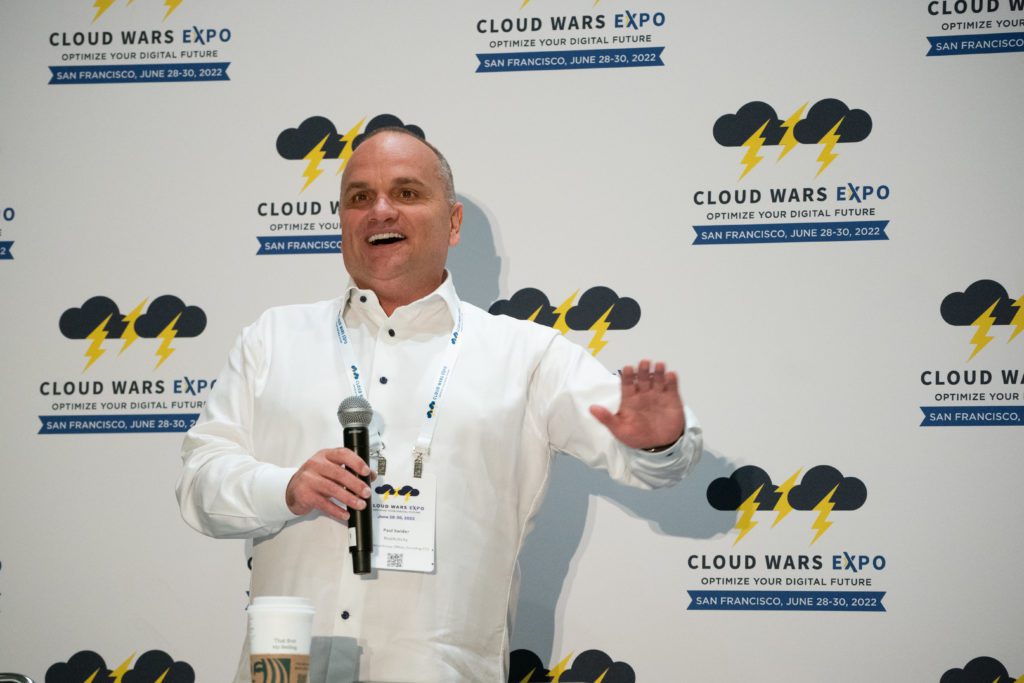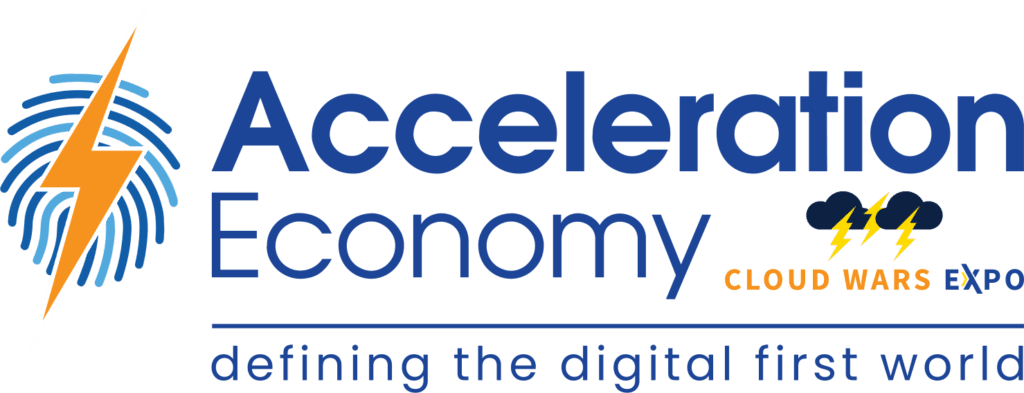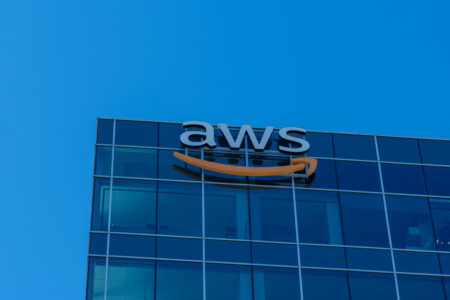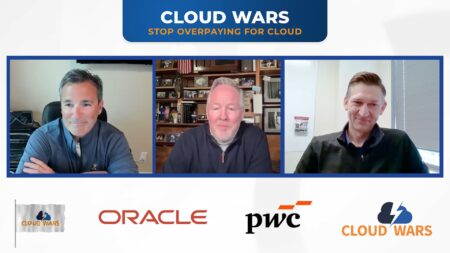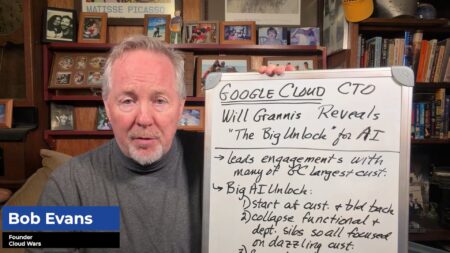One of the major experiences at the Cloud Wars Expo 2022 event was the Healthcare Industry Cloud Battleground sessions. Hosted by yours truly, Paul Swider, the Industry Cloud Battleground sessions featured informative and exciting presentations with major industry players answering our well-researched questions about the future of cloud computing in healthcare.
Read on to learn about how each of the vendors answered five important questions during the Industry Cloud Battleground healthcare track, which covered interesting developments in healthcare cloud computing, challenges that providers face to implement the cloud effectively in their operations, and other key highlights.
Five Questions for the Healthcare Industry Cloud Battleground
During the proceedings of the Industry Cloud Battleground sessions, key players were given 20-minute sessions to answer five questions that encompassed the vast scope of cloud computing and the entire healthcare industry:
- As we know, the healthcare industry is around 20% of the GDP in the United States. It’s extremely complex with a number of key stakeholders driving change. What are the areas that your Healthcare Cloud focuses upon and what are the unique capabilities in those spaces?
- Healthcare organizations are trying to simultaneously cut costs, boost efficiencies, drive growth, and deliver superior patient outcomes. How does your Healthcare Cloud help them address all those objectives?
- While delivering all of these essential outcomes that are potentially saving lives and having this impact, your Healthcare Cloud must also have world-class capabilities in cybersecurity and privacy. How do your healthcare solutions provide the cybersecurity and privacy levels that both your customers and your patients demand?
- What do you feel is one of the differentiators that, in the minds of customers, moves your Healthcare Cloud to the top of the list of all your competitors?
- We continue to hear about severe shortages of skilled healthcare professionals across a wide range of job titles. How does your Healthcare Cloud help customers address this critical need?
After the main questions were answered, audience attendees also had the opportunity to ask questions to further expand on any of the topics discussed.
In the following sections, you’ll find out how Google, Microsoft, Workday, and Oracle each are positioning themselves in healthcare, the largest industry in the world that’s expected to triple in revenue by 2025. I’ve taken the time to recap this Industry Cloud Battleground track and break down what I think are the highlights and strengths of each of the healthcare vendors below.
Google Cloud
Joe Miles (Managing Director, Cloud Healthcare & Life Sciences) and Polly Israni (Head of Global Marketing, Healthcare & Life Sciences) presented for Google Cloud‘s Industry Cloud Battleground session. You can watch the whole session here.
Key Responses and Insights
On Privacy and Security:
Joe Miles: “But one of the key tenets I always like to highlight is that customers own their own data. So when you move to the cloud, regardless of what you put into the Google Cloud, you own that data….That data is always encrypted at rest and it’s encrypted in motion.
“Further, if you have that data located in various geographies and jurisdictions, which is quite common for the Life Science side of our business, [then] we can help you with the compliance component for a lot of the data sovereignty issue, so that if data is residing in servers that might be sitting in China or in France, or Germany, or in Russia, then that data cannot leave those servers. . . . It’s a critical element of maintaining not only the security, but also compliance around those different aspects of the regional data sovereignty issues.”
On What Differentiates Google From the Competition:
Joe Miles: “I think the best way to highlight some of the different ways in which we innovate is to talk about some of the different customers:
We have an AI factory with Mayo Clinic that started over two years ago. [At that factory] we have clinicians co-located with technologists in Rochester, Minnesota who are working on therapies and developing machine-learning algorithms against those therapies, much of which is image based . . . in areas of urology, radiology, pathology, and oncology.
Whether that’s looking at physician notes coming from an EMR and understanding what that position is really saying based on that information, or just something as mundane as taking faxes and being able to convert faxes into digital information that includes medical information — that’s a very critical component for the payer space actually.”
On Telemedicine:
Joe Miles: “The Fitbit acquisition that we completed last year also gives us a tremendous capability of going directly to the patient, just to deliver capabilities to where the patient is. . . . One [usage] that’s starting to emerge quite a bit is around using the Fitbit tool to monitor post-surgical rehabilitation scenarios. Using a device to make sure that in tracking that patient’s activity levels, they’re doing what they need to do to come back from that replacement or that back surgery or whatever it might be. And being in there and having visibility in that really is very unique in that regard.”
Audience member question: “What can Google do now today to bring more efficiency to the EHR and to reduce EHR and clinician burnout?”:
Joe Miles: “We have a solution called Care Studio. You can actually go into YouTube and just type in “care studio” and there’s a demo online there. But effectively, what it’s going towards is directly helping clinicians be more productive and to leverage digital technologies to make their job easier and simpler. As you’re pointing out, it’s not just simply the productivity of the physicians being asked to do a lot. They’re not surviving some of that.
So, what can we do to try to use that? . . . As you do different searches, from a physician’s perspective, it can make [ordering] a lot easier. Putting through their scripts and kind of that ordering process can be minimized considerably, but that’s definitely an area that we’re seeing quite a bit of interest in. We’re working actually with Meditec from an EHR perspective, one of the larger EMR providers to integrate that into their application.”
Microsoft
Dr. David Rhew (Chief Medical Officer) presented for Microsoft with Kim Swafford (U.S. HLS Regional Business Leader) moderating this Industry Cloud Battleground session. You can watch the whole session here.
Key Responses and Insights:
On Making Data More Fluid:
Dr. David Rhew: “A big part of our effort at Microsoft is to build a platform that allows us to be able to ingest multiple different sources of data that represent the whole individual and where they are on their journey. And then on top of that, apply analytics and artificial intelligence and machine learning in ways that we couldn’t have envisioned before.
One of the areas that Microsoft has recognized is a whole set of capabilities that can touch on three (3) things: Data ingest, data analysis, and data collaboration. That really is the Microsoft Cloud for healthcare. It’s not just an opportunity to talk about these things, but it’s about how data can be made more fluid flow from the differences, set of capabilities, such as FHIR APIs to pull in multiple different sources, artificial intelligence using the latest and greatest for unstructured to structured documentation, and then collaboration.”
On Interoperability for Clinical Workflows:
Dr. David Rhew: “So the whole concept of interoperability making data liquid allows us to be able to activate all those amazing use cases because that is something that we’re now finding will allow us to empower the individuals.
For example, with the Cleveland Clinic, there is an example of clinicians having a lot of administrative work on their table being passed over to another group that is going to focus on these campaigns. That’s a really great example of the DAX (Dragon Ambient eXperience); [it reduces] administrative work that has been placed on clinicians. [That work] is now being pushed through an electronic mechanism so that it’s automated and brought into the clinical workflow.”
On Using Automation for Better Patient Results:
Dr. David Rhew: “The Cleveland Clinic [is] one of our early adopters of the Microsoft plot for healthcare. During the pandemic, they recognized that a very important thing was happening. People were not coming in for their clinic appointments. They were doing virtual. . . . And what we found was that in [in-person visits], simply sending an email reminder [or]a text message to the patients wasn’t good enough. And what they realized was that they needed to change the way that they interacted with patients and push this information out to other channels.
So that’s where the Dynamic CRM and the Microsoft Cloud for Healthcare came into play. Because what they were doing is they were identifying the individuals from the different types of datasets. That they had to look at where they were on their journey, noticing that there was an opportunity to be able to then push out information as a healthcare campaign through the dynamic system. And the results were amazing. They were able to dramatically increase the appointments for colonoscopy, for mammography, and for vaccinations.”
On Caregiver Burnout:
Dr. David Rhew: “As a busy clinician, I can tell you when I see a patient, probably the way I’m interacting with them is sort of half my-back-to-them and half back-to-the-computer. . . . We found that conversation can be captured through ambient clinical intelligence. This is a voice AI technology that allows us to be able to capture that conversation converted from voice to text, organized into clinical progress now, so that after the visit, I can look at that, make a few edits, and then push a button and get it into the system.
Now, that’s something that we also have said, ‘Boy, that’d be fantastic if that actually did what you just said.’
Well, we know [that for] 50% of the individuals that are using it today, it reduces the amount of time to document an EHR at 50%. We also know that [among] a large number of these clinicians who are burned out, 70% [say] they feel less burned out because of this technology. The patients love it. Then you’re not backside to them anymore. 83% of patients say they have a better experience. And this is something that was also interesting. We saw that we increased the first-time approval to fire off at 40%. That’s another element that helps in terms of the clinical efficiency as well as the ability to reduce that burnout.”
On What Differentiates Microsoft From Competitors:
Dr. David Rhew: “We are focused on meeting clients where they’re at. . . . Not everyone’s on the cloud. Well, we think that that is certainly a journey, but many of them have an on-premises system, they may have an idea of maybe they want to go multi-cloud. So, our ability to be able to provide offerings that are hybrid, multi-cloud available…in different areas [is] extremely important for flexibility.”
On Training Platforms:
Dr. David Rhew: “We’re seeing mechanisms where organizations are using mixed reality and artificial intelligence to be able to convert programs that were designed to train nurses so that they can now rapidly develop skills and become much more proficient . . . in the field. And the list goes on because innovation is something that the cloud for healthcare will allow us to be able to think in many different ways.”
Workday
Joe Wilson (Chief Technology Officer, Americas) and Keith Lohkamp (Sr. Director, Healthcare Industry Strategy) presented for Workday with Sarah Hickman Auger (Industry Director of Healthcare, Solution Marketing) moderating this Industry Cloud Battleground session. You can watch the whole session here.
Key Responses and Insights:
On the Scope of Workday’s platform:
Keith Lohkamp: “At Workday, we really have the privilege of working with organizations across the value chain for healthcare, whether it’s biotech or pharmaceutical companies like Sanofi or wholesalers and distributors like Cardinal Health. We work with hospitals and clinics, organizations like Advocate Aurora Health Children’s Hospital, . . . long-term care, home health, and even some of the emerging players in consumer retail, like CVS Health.
And so while facing these challenges, of course, the industry continues to evolve with changing consumer expectations and new technology innovations in terms of how and where care is delivered. So, the healthcare environment really continues to change all the time.
On Employee Sentiment:
Keith Lohkamp: “On the employee front, we see our customers starting to use the Workday Peakon Employee experience to really get at the heart of employee sentiments. And so going beyond sort of the ratings of surveys and starting to use what we call “intelligent listening,” to understand the comments back and really surface up how people are truly feeling. So, Sanford Health was to be able to survey their employees to really understand their sentiment [and] provide two-way communication between their managers and their employees, as well as really understand what was working or not in terms of their employee programs. And as you imagine [during] this battle for talent, [retaining] engaged employees is really critical as well.”
On Supply Chain Issues:
Keith Lohkamp: “The challenge of building a resilient supply chain is really top-of-mind for a lot of our customers. Workday can help our customers fully automate their supply chain processes, provide visibility into critical items, go out and source and onboard new suppliers, and automate inventory processes.
In fact, one of our customers, Sharp HealthCare, was able to use Workday strategic sourcing to save over $4 million dollars in the first six months of using the product by going out, sourcing, and saving on products/services that they buy. They’re also able to reduce their RFP cycle time by a third as well. So we’re seeing a lot of success from our supply chain customers.”
On What Differentiates Workday From Its Competitors:
Joe Wilson: “We’re the only single vendor in our space that will provide auditability for every single transaction that service no carve-outs, no exceptions: Who did what, when, and time-date stamped down to the moment, including the before and after values for every data attribute, because we don’t have to be beholden to the legacy architectures. . . . We leverage an object model and we can literally traverse that object’s history with all the associated data and all the associated evidence. This is a big deal.
We like to treat all data in Workday as first-class citizens. It’s reportable. It’s inspectable. You can leverage it to fire off integrations, you can do things on business processes with it. And so that becomes very important because while we provide core capabilities to healthcare providers for finance, supply chain, and HR, we are one of several key anchor systems around CRM or warehouse inventory and things like that. And so we have to, by the nature of being a true cloud service, play well with others.
We like to provide the evidence, and we invite all to get a little bit more scrutiny as we evaluate the options out there because, well, it’s just not all created equal.”
On Recruiting and Retaining Staff:
Keith Lohkamp: “We’re hearing all the time from our customers about the challenge to be able to recruit and retain that talent. And, Workday can help in three ways:
“The first is providing visibility into the workforce, including the skills they have, and being able to identify where there may be gaps in skills and opportunities to be able to redeploy workers.
“The second area is trying to deliver better tools to engage with employees and retain employees. I gave that example early on about how Sanford was able to get to employee sentiment, but really to be able to understand where there are potential risks and be able to prioritize action.
“And then, finally, it’s around our recruiting and vendor management tools that can really identify and publish those [recruitment] opportunities to industry networks to find more talent. We see customers like Intermountain Healthcare really use things like our people analytics, which are infused with machine learning to go through tons of data and actually [identify] what’s driving that turnover concern across the organization.”
Oracle
Mike Sicilia (Executive Vice President, Vertical Industries) presented for Oracle‘s Industry Cloud Battleground Session.
Key Responses and Insights:
We heard about Oracle’s recent acquisition of Cerner, which enabled workflow to provide end-to-end care not only at the cost level and at the platform level, but he gave plenty of examples of IoT and the device level. Mike Sicilia also explained how security is embedded in Oracle from point of care to the Oracle Cloud.


